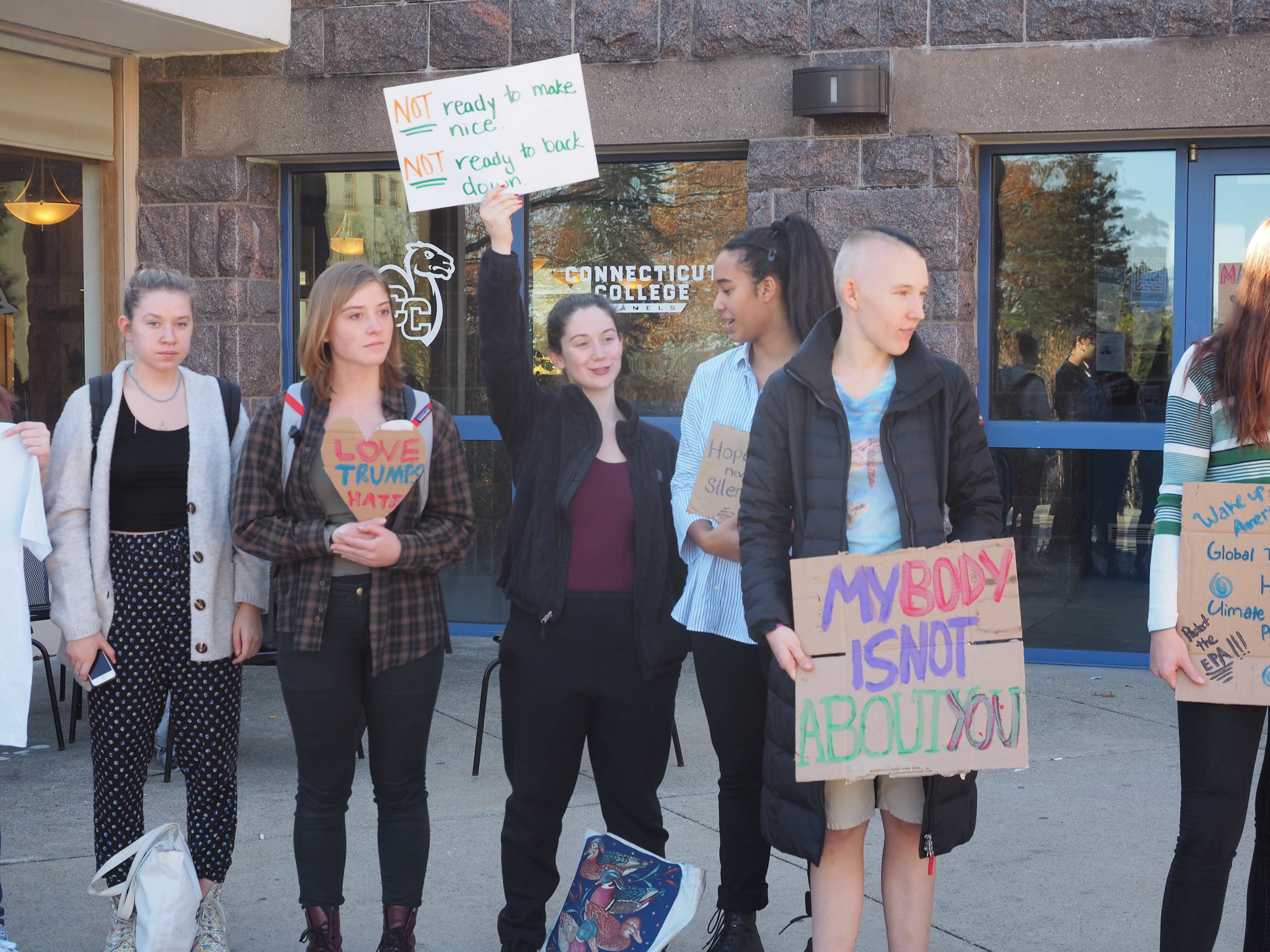In response to the results of the recent presidential election, students at Conn and many other colleges and universities across the nation have organized protests. While the administrators at some institutions condone these protests, others are more intransigent. The protests are usually peaceful and feature students standing with each other for a common cause, holding signs or communicating their message verbally.
The protest at Quinnipiac University, in particular, serves as an effective model for students wishing to express grievances with a Trump administration. It was powerful precisely because students, faculty and staff alike participated in voicing their worries. In an interview with The Quinnipiac Chronicle, Ruth Kaplan, an English professor who helped organize the protest, notes that the ascent of Donald Trump represents a “national tragedy.” In response to tragedies, she says, “there’s… grounding and healing to come together in mourning. The first step towards a future of resistance and action is to gather with like-minded people and learn from their reactions and be inspired by the changes they plan to make.”
Diane Ariza, Associate Vice President for Academic Affairs and Chief Diversity Officer at Quinnipiac, attended the protest and voiced similar sentiments in a separate interview with The Quinnipiac Chronicle. “This is just a small, very small way of saying we are moving forward and we need to be together,” Ariza said. “It’s not political, Republican or Democrat. It’s about coming together to talk about it as women.” Ariza provides a clear perspective on the purpose of protests. Protests are not always centered on reversing the unfavorable results produced by our imperfect political system. Instead, they serve as a forum to debate larger issues that concern and affect people.

Photo by Sophia Angele-Kuehn
Administrators at Quinnipiac, by participating in the protest, expanded the audience of the debate. They also demonstrated that they valued hearing what students and faculty had to say about the election. Protesting on college campuses is an important tool in a democratic nation like ours. It gives people a chance to air their grievances and frustrations with the current system. Protesting also gives ordinary citizens a chance to be heard by their peers, not just those in power. Many large movements in the past century have in fact started off as smaller protests by those who wished to speak out against something they believed was wrong. Even though protests on college campuses will not change the outcome of this presidential election, students must let their voices be heard to ensure the system reflects their interests
President-elect Trump, in calling for an end to the protests, only highlights their power as tools for political change. Arguing that protests will not change the results of the election, President-elect Trump has in fact publically called for President Obama to condemn the protests. I have heard from peers frustrated with protests. They say that President Obama, when elected in 2008, faced few protests. Americans, they argue, should give President-elect Trump a chance to prove himself before protesting. Students expressing these views may misunderstand the purpose and aims of protesters. The protests are not about how the Democratic candidate lost; they are spurred by what the new president stands for and the divide in this nation that his election reflects. Fear for the future of this country may have led people to vote for President-elect Trump, but it has also spurred the protests that we have seen across the nation. Some may try to dismiss this fear by referring to President-elect Trump’s victory as a political anomaly. I do not, however, think that this explanation will end discussions anytime soon. Discussions themselves are an important vehicle to shape the future of this nation and the future of the world. Utilizing protest as a form of debate is essential if we wish to respond productively to the result of this election. •









